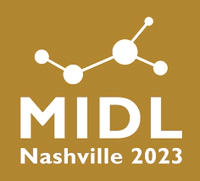Generalizing Unsupervised Anomaly Detection: Towards Unbiased Pathology Screening

Abstract
The main benefit of unsupervised anomaly detection is the ability to identify arbitrary instances of pathologies even in the absence of training labels or sufficient examples of the rare class(es). Even though much work has been done on using auto-encoders (AE) for anomaly detection, there are still two critical challenges to overcome. First, learning compact and detailed representations of the healthy distribution is cumbersome. Second, the majority of unsupervised algorithms are tailored to detect hyperintense lesions on FLAIR brain MR scans. We found that even state-of-the-art (SOTA) AEs fail to detect several classes of non-hyperintense anomalies on T1w brain MRIs, such as brain atrophy, edema, or resections. In this work, we propose \textit{reversed AEs (RA)} to generate pseudo-healthy reconstructions and localize various brain pathologies. Our method outperformed SOTA methods on T1w brain MRIs, detecting more global anomalies (AUROC increased from 73.1 to 89.4) and local pathologies (detection rate increased from 52.6% to 86.0%).